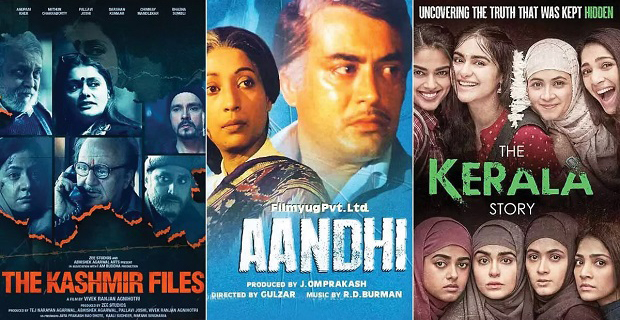THE BAN CULTURE IS GOOD
The ban culture and the jail culture have always existed in India. The British did it and so did the post-independence rulers. The first prime minister of India did it and the rest of the family, which ruled the country, followed suit.

Finally, when any film got a censor certificate, a triangle on the certificate, which indicated cuts in the film, was prominent (the cuts imposed by the Board were listed on the back of the certificate and putting up the complete list often required a long sheet of paper.) The film trade in those days called it a massacre, so you can imagine!
There was no anger because the film fraternity to which Majrooh belonged lacked the courage to raise its voice and so did the media, which did not want to take up cudgels against the powers that be. The people did not know what was happening and, probably, did not care. Films were being made and melodious songs were still being composed. Things went unnoticed.
The trend of sending artistes to jail was diluted, for banning was seen to be more effective. Kishore Kumar songs were banned on the government-owned radio services in the mid- 1970s because he refused to grace an event organised by Sanjay Gandhi, not even a government official!
This was at the peak of Kishore Kumar’s popularity and the idea was to hit where it hurts most, namely, the wallet. No filmmaker would want a banned artiste to sing for his film. If songs worked with people, so did the film. The government-owned radio channel was the only way to popularise a film’s music, for few could afford gramophones, not to mention the highly priced music records. Luckily, it did not work that way eventually.
The ban culture has spread and been assumed by various community, religious or other groups. Maybe, those in power have outsourced the job. It created a vote bank. Take for example the 1982 film ‘Ramnagari’ by the National Award winner Kantilal Rathod. The term barber, also known as ‘hajam’ in the vernacular, was used in the film. Objections were raised and the film could be released after the makers had to deal with various forces.
The story repeated itself when a certain community took exception to the title of Shah Rukh Khan’s film, ‘Billoo Barber’ (2009). The barber should not be called either a ‘hajam’ or a ‘barber’ was the contention! How does one cope with such a situation? The one who has faced such illogical objections to his films is Sanjay Leela Bhansali, especially with ‘Galiyon Ki Rasleela Ram-Leela’ (2013) and ‘Padmavat’ (2018).
But now there is good news for makers wishing to do bold films. When a demand is made from various corners of the country to ban a certain film, it spells crores for it. ‘Kissa Kursi Ka’ was a dud because nobody cared about what happened during the Emergency. The general public across India was not affected by it as were people in the Hindi belt. Also, it was a poor production made with the idea of making a quick buck.











Comments.